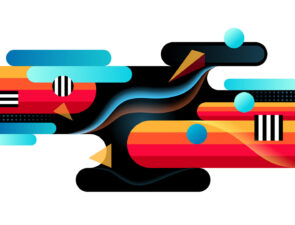Seven tips to bring mindfulness to your design practice
By Andrea Ciafardini, Designing Your Life Workshop Instructor & Owner of Holistic Connections
What is the difference between music and noise? Through music, we create sounds that are harmonious, while noise is meaningless, disruptive and oftentimes unpleasant.
Think about all of the thoughts flowing through your mind as different sections of an orchestra. When your thoughts are in sync with your values and priorities, you can create beautiful music. But when your thoughts are racing and scattered, they can create a frustrating, anxiety-inducing environment.
The key to achieving balance comes through mindfulness. Mindfulness is your orchestra’s conductor.
Applying simple mindfulness techniques in your everyday life can improve your creativity and aid in the design process. Follow these mindful tips through each stage of the design process to create a symphony.
How to Incorporate Mindfulness into Your Design Process
- Practice empathetic listening. Empathetic listening creates a safe environment that is conductive for collaboration. Practice listening without making any judgements. Try to interrupt others when they’re speaking, even to agree. Show others that you have their undivided attention by putting away your phone and closing your laptop. Repeat what they say in your response to show that you’ve heard them. Use open ended questions and invite people who may not usually participate to share their point of view.
- Reduce anxiety and stress. The easiest way to do this is physically. Check in with your body, practice good posture and be mindful of your breathing.
- Go offline. Stop multitasking to calm any distracting thoughts. Unplug for a bit. If you feel guilty about “doing nothing,” try a walking meditation or spend time in nature.
- Increase awareness. Practicing mindfulness helps us be more attuned to our thoughts and help us see them better. Through meditation, you can eliminate distractions and be able to focus more intently, allowing you to create higher quality initial ideas.
- Stop obsessing. Don’t try to force anything, and instead let insight come naturally to you. Relax and try not to involve active thinking.
- Let go of expectations. Accept any setbacks you may face with grace and be reminded that any judgements passed are not a reflection on you as a person. Not everything you try will be successful. Limit negative self-talk and remind yourself that failure is part of the design process. Tracking your failures using the failure log worksheet can help you find important lessons or insights and reposition perceived mistakes as learning experiences.
- Reflect on the process. Reflecting upon what was done well and what could be done better next time will help the process next time around. Journaling is a particularly great way to express what you’re grateful for.
Consistently keeping mindfulness at the forefront of the design process eventually creates healthy habits for balancing the mind. Practicing mindfulness will help your thoughts work together in harmony and live a symphonic life.










